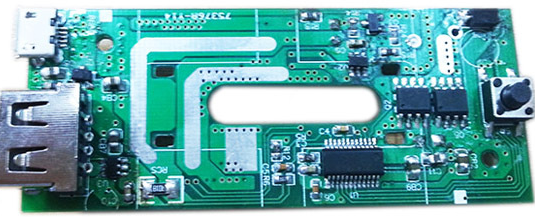Early placement machines did not measure the actual height of the PCB circuit board during placement. It was assumed that the PCB circuit boards were flat and the thickness data of the components were consistent. On this basis, the height of the z-axis during placement was calculated. Control the movement of the Z axis of the suction nozzle. This control method did not have a high smt placement density at the time, and the effect was satisfactory when the circuit board was thicker and the components were large. However, with the continuous improvement of smt placement density, the large number of small components are used, especially the placement of 0603 and 0402 components. This method is difficult to calculate the z-axis height correctly, which usually causes failures such as insufficient or excessive pressing .
How can the fast-moving nozzle be able to accurately determine the change in the height of the circuit board and the difference in the thickness of the components so that the components can be pressed into the solder paste properly? There are many ways to solve this problem in modern placement machines. Let's explain it below.

1. Improvement of Z-axis motion servo drive control
Early placement machines used pneumatic methods to control the Z-axis movement of the suction nozzle. Due to the limited accuracy of pneumatic control, it was difficult to precisely control the movement of the suction nozzle. Modern placement machines generally use servo-controlled linear motors that can accurately control errors, coupled with the application of high-speed solenoid valves, which provide the basis for the precise control of z-axis motion.
2. Closed loop control of Z axis height
In smt patch proofing or processing, installing a height sensor on the patch head to measure the height of the circuit board at any time can achieve closed-loop adjustment of the Z-axis height. In this way, the smt placement height can be accurately controlled to the order of microns. However, this method does not effectively adjust the pick-up height problem. It can be said that it only solves half of the problem.
3. Current monitoring and control
In the Z-axis motion control design of the suction nozzle, the working current of the Z-axis motor of the placement head is monitored. When the placement head contacts the component, the working current of the motor will increase. The advantage of this method is that it solves the control of picking and placing at the same time. However, this method has very demanding requirements for monitoring and control circuits and mechanisms. It not only requires a certain impact force in the motion, but also requires a high sensitivity of the current monitoring device, and at the same time the actuator has a very fast response speed, so that the system can detect The placement head is in contact with the component during picking, and the current changes when the component and solder paste are in contact during placement, so that the suction nozzle is stopped in time.
4. Placement force sensing control
This is an ideal and more effective method. The basic idea is to perform placement force sensing on the placement head, for example, using a strain gauge to provide the corresponding Z-axis height calculation value for picking and placement operations. The strain gauge can provide corresponding continuously changing data output according to the impact force of the suction nozzle, thereby real-time control of the Z-axis position of the suction nozzle. Programming error, causing damage to the component. The biggest advantage of this method is that it can improve the sensitivity and adaptability of high-level control. Of course, the cost of installing strain gauges for each nozzle on the rotary placement head is also considerable.
The above technologies can all realize the control of placement force and are applied in different SMT placement machines. No one technology has an absolute advantage, and products that can experience actual production tests on the market have technical characteristics. In theory, the placement force sensing control method is an ideal mode, but the corresponding technical difficulty and requirements will also increase.